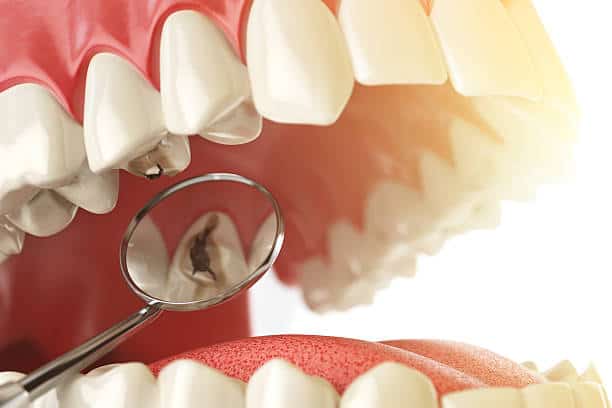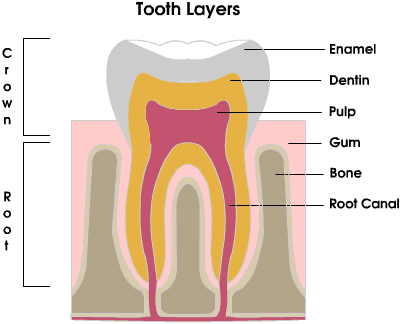February is National Children’s Dental Health Month and we’re starting off the month by answering some common questions patients have about their child’s oral health.
When do my baby’s first teeth come in?
Every child is different and the timing of when teeth erupt vary from child to child. Most of the time we’re not as worried about timing but more importantly which tooth comes out first. Babies typically get their first tooth at 6 months but some can get them as early as 3 or 4 months while some as late as 18 months. What we look for is that the bottom front two teeth come out first. The teeth often come out in pairs with their matching counterpart. Use this handy chart to see when your babies next tooth should be coming in!
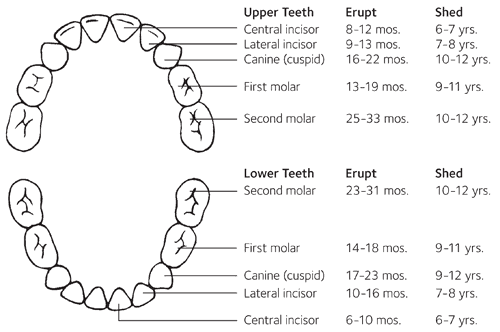
Why is it important to keep baby teeth healthy and fix cavities on them if they’re coming out?
We get this question all the time, parents want to know if the tooth is going to fall out anyway why should cavities be fixed. We discussed in an early blog that cavities are bacteria that invade the tooth. It is the same for a baby tooth. The only exception is that the bacteria moves faster since the teeth have less enamel and are smaller. We want to stop the spread of the cavity before it reaches the nerve. This will prevent your child from having any pain, swelling or spread of the infection.
It is important for the teeth to stay in place until they are ready to come out on their own. Premature removal of baby teeth can cause other teeth to shift. Shifting of teeth can make it harder for the permanent tooth underneath to come in straight. Since baby teeth act as place holders for the permanent tooth, keeping them in as long as possible will help decrease the chance your child will need braces!
When should I start brushing their teeth?
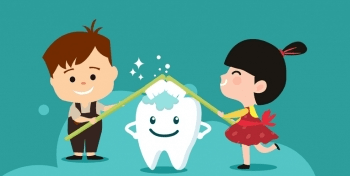
It’s never too early to start cleaning your child’s mouth! Even before your baby gets his or her first tooth it is a good idea to start the habit of cleaning their mouth.
For a baby with no teeth, you can use a wet washcloth and clean off the plaque from their gums and tongue. This will get them used to having something in their mouth and will help you establish the habit.
Once they get their first tooth you can use a wet, small, soft toothbrush and gently clean their teeth. When the teeth start touching you can start introducing floss. Continue flossing for them until they learn it for themselves. Try to brush their teeth twice a day for two minutes each time. Most children will need help in making sure all the plaque is brushed off. Don’t be afraid to get in there and get your hands dirty!
When should kids start using toothpaste?
The American Academy of Pediatric Dentistry recommends that you start using a very tiny smear of toothpaste twice a day once your child’s baby teeth are present. Once your child can spit after they brush, typically ages 3-6, you can use a pea-sized amount. Remember to get them to spit out the extra fluoride-containing toothpaste!
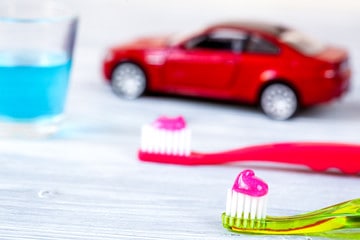
When should I take my child to the dentist?
Some experts say two but the American Academy of Pediatric Dentistry recommends as soon as their first tooth comes in and no later than 1 year old. When deciding to bring in your child to have a discussion first with your dentist. He or she can determine their risks for cavities and can steer you in the right direction of how early to bring them.
Is it a problem my child sucks on a pacifier or their thumb?
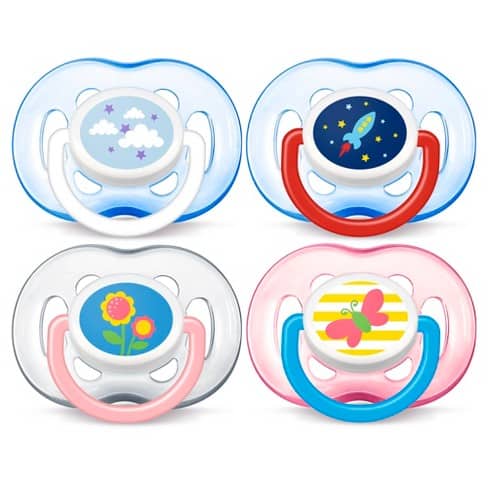
A pacifier is a great soother for infants but used for an extended time can affect your child’s bite. We recommend having your child stop by age 3 and usually most children will do this on their own. If your child continues to suck their thumb or a pacifier for long lengths of times (think hours) than they can force their front teeth apart to where they don’t even touch! If your child has a hard time giving up this habit after the age of 3 then there are appliances that can be put in their mouth to force them to stop sucking.
For more information about your child’s health make an appointment for them to come to visit Dr. Dhaliwal or check out http://www.aapd.org and get the latest updates and recommendations!


